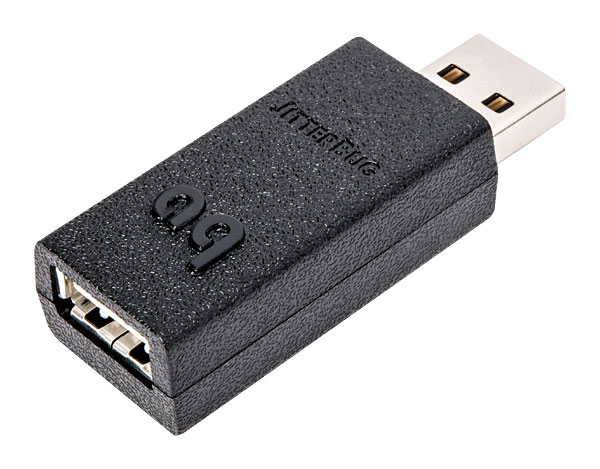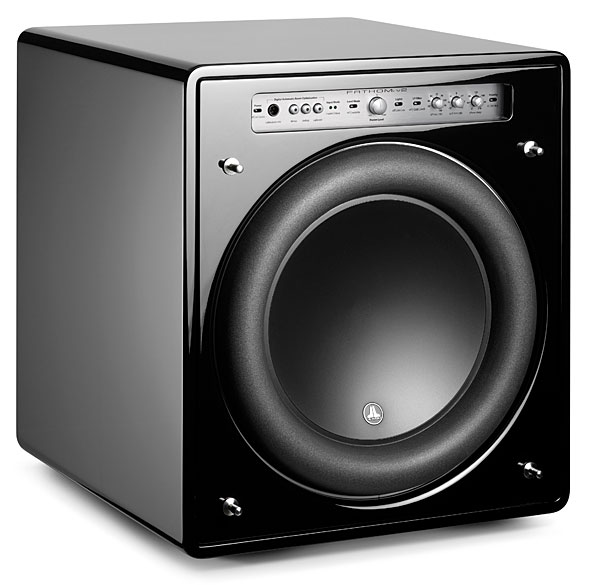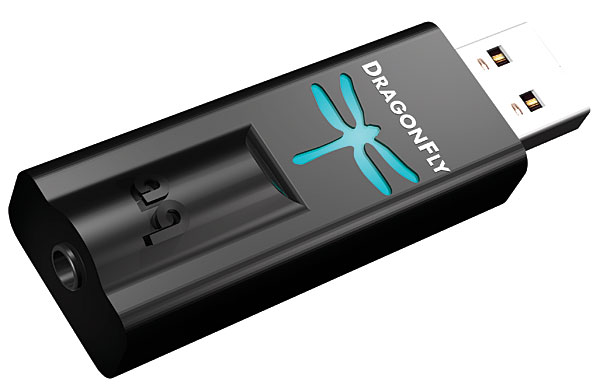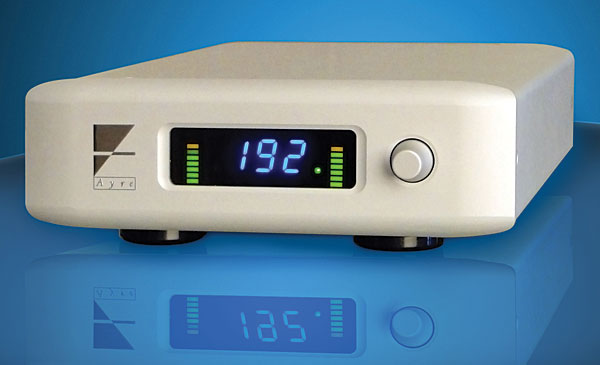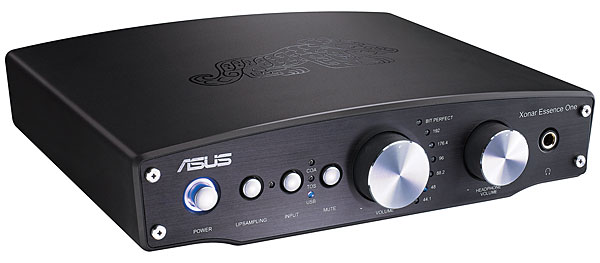On the mainland across from these isles, in Port Hueneme, is Channel Islands Audio (aka CIAudio), a company of modest size that's been around for 17 years and makes compact power amps, preamplifiers, and digital/analog converters. Like the islands, always sitting quietly off the coast but barely seen, CIAudio had always been in the periphery of my audio world, though I knew little about them. So I was pleased to get the Transient Mk.II USB DAC-preamp and optional VDC5 Mk.II power supply in my system, to learn firsthand what CIAudio is up to DACwise.
At 4.45" wide by 2.9" high by 5.25" deep, the Transient Mk.II ($699) fits into an open palm and is thus very portable, hence its name. The understated case, made of 1?8"-thick aluminum, is nicely finished, with a 3/16"-thick front panel. All hardware is nonmagnetic stainless steel, and the Transient feels solid and nonresonant.
On the front, starting at the left, is something I love to see on a DAC of any price: a row of six LEDs that indicate the incoming signal's sampling rate, in this case 44.1, 48, 88.2, 96, 176.4, and 192kHz. On the right are stacked two small buttons, with arrows to indicate volume up and down, and next to each of these is another LED. Each volume button's LED flashes as you tap it, then stays lit when you hit its limit. You can also use these buttons to set the DAC to Line Level, if you don't need the volume function.
On the rear panel, starting at the left, are the unbalanced left and right audio outputs (RCA). At the right top is the USB input, and below that the three digital outputs: a 75 ohm BNC connector galvanically isolated for S/PDIF (an RCA-to-BNC adapter is included), a mini-DIN jack for I2S, and an HDMI jack for differential I2S (also used by PS Audio, Wyred4Sound, and others).
With its variety of outputs and 24-bit volume control, the Transient can be used as a USB DAC, a DAC-preamp, or a USB-to-S/PDIF or USB-to-I2S converter. The only thing missing for a desktop system is a headphone jack.
Power that doesn't corrupt
There's one more thing on the Transient's rear panel: to the right of the digital outputs is a DC input, for the optional VDC5 Mk.II power supply. Although the Transient was designed to be powered by the 5V available from a computer's USB output and still output a full 2V analog signal, and has onboard filtering to clean up that incoming power, CIAudio suggests that if you want the best sound, hook it up to the VDC5 Mk.II. Housed in a case identical to the Transient's, the VDC5 costs $329, bringing the total package price to $1028. The VDC5 is marketed to also replace the power supply that comes with the Squeezebox Touch music server.
CIAudio points out that the quality of DC provided by USB varies quite a bit from computer to computer, and can often contain noise, ripple, or simply not enough current, all of which can affect sound quality. The VDC5 Mk.II's regulated linear power supply is designed to feed the Transient pure high-current (2.5 amperes) DC with no noise or ripple.
The VDC5's front panel has only a single power-indicator LED; on the rear are a power switch, an IEC power socket, and a 5V output jack. A short cable is included to connect it to the Transient, the two models together forming a matched set. Both are "handcrafted" in Ventura, California, and come with a five-year warranty on parts and labor.
The Transient's USB input connects to a four-layer custom USB board featuring an XMOS multicore processor and ultraprecise clocks, which CIAudio claims work with the computer to generate a low-jitter I2S signal. The precisely clocked I2S output is then fed to four circuits: a buffer for the I2S DIN output jack, a differential buffer for the HDMI I2S connector, an S/PDIF transmitter for BNC S/PDIF output (based on a Wolfson WM8805 chip), and into the onboard Wolfson DAC chip. Takman resistors and WIMA polypropylene capacitors are used for signal circuits.
CIAudio's Dusty Vawter emphasized to me in an e-mail that they wanted the Transient to be completely portable, which meant that it had to be able to be run from the 5V supply available from a laptop's USB port. "There are very few DAC [integrated circuits] with this capability," Vawter said. "We listened to offerings from ESS, TI, and Wolfson. In the end, we chose the Wolfson due to its superior musicality and benefit of having a built-in 24-bit volume control."
Set-Up
Connected to a LightningtoUSB Camera Adapter, the Transient didn't power up when connected to my iOS7 iPad Air, iPad mini, or iPhonenot surprising, considering how the DAC's design sucks up every bit of current it can get, and these battery-powered iDevices don't put out much via USB.
But I was surprised to find that, after powering the Transient with the VDC5 power supply, I still got a warning on the iDevice display that the power draw was too high. Interestingly, this time the warning notice mentioned the CIAudio DAC by name, so more info was getting through, but not enough to include music. Occasionally, the Transient's LEDs would blink. Only a handful of USB DACs have been able to work straight off my iPad, by the way, so this is not a really a criticism, just a note to those who might want to use the Transient this way. To fire it up with an iDevice, you could also try a powered USB hub.
However, when I attached the Transient to my MacBook Pro, everything powered up fine without the VDC5, and worked right awayno need to reboot or for extra drivers. The DAC also works with Linux and, like all high-resolution converters, requires download and installation of a driver for computers running Windows XP through Windows 8. All of my listening was done with the Transient connected to the battery-powered MacBook.
Music that might corrupt
In honor of the Channel Islands, I felt obligated to throw some California music at the Transient, beginning with the fabulous new 24-bit/192kHz remasterings of the Grateful Dead's studio albums, from HDtracks. These are remastering done to perfectioneven less-than-fanatical Deadheads should grab them.
I skipped around a couple albums, then settled down with American Beauty for some extended listening. Everything sounded in the right place, with a beautiful flow from top to bottom. I used the loose, open arrangement of "Sugar Magnolia" to check for any changes in the sound as I switched the external power supply on and off. (The Transient will automatically default to USB power if the VDC5 is switched off, and automatically default to the VDC5 when the latter is switched on.)

